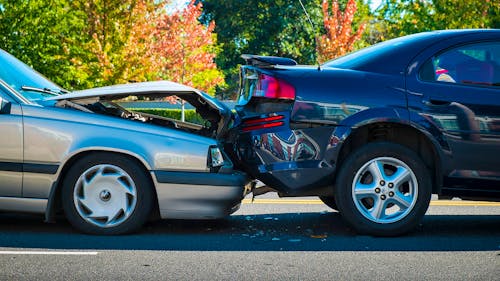Cheap Car Insurance in Los Angeles for 2024

Hold on to your wallet if you have to insure a vehicle in Los Angeles. On average, insuring a vehicle in Los Angeles County is going to cost you somewhere around $2,600 per year, slightly higher than the California state average, but that’s heavily weighted to the number of cars here.
| Rates we found reported as “typical” or “average” (annual) online | Average (annual | Adjusted average* (annual) |
|---|
(*) The “adjusted average” is computed by eliminating the highest and lowest values and averaging the remaining values.
Who Has The Cheapest Car Insurance in Los Angeles?
- GEICO
- Nationwide
- State Farm
- Century National
We pulled data from a number of sources to try and figure out what insurance cost in Los Angeles, on average, for a male driver in his 40s with a clean driving record and no accidents. Remember, this is a GUIDE to what insurance is going to cost. Your mileage is going to vary widely depending on what you drive, where exactly in LA you live, and a number of other factors.
DISCLAIMER: There are numerous other factors that are going to impact the cost of insurance on your car, crossover, or truck. We’ll provide info on some of those variables, but your best bet is to read our deep dive on Cheap Car Insurance for 2024 to get a better idea.
Fast Car Insurance Rate Quotes
Compare quotes from multiple providers to get a good deal.

Who Has The Best Cheap Car Insurance in Los Angeles?
- Best Large Insurance Carrier: GEICO - Every single source showed GEICO as the price leader.
- Cheapest Insurance from a Smaller Carrier: Wawanesa - This San Diego-based insurer was more expensive than the big national firms, but still provided a competitive price.
- Cheapest Insurance with One Accident: GEICO - No matter what your situation, GEICO comes out on top for CHEAP insurance. It may not be the BEST insurance for your particular needs, though.
- Cheapest Insurance for Higher Mileage: GEICO - The large national insurance carrier dominates the list of cheapest insurance in the state of Los Angeles.
How Much Does Car Insurance Cost in Los Angeles?
In our larger story on car insurance, we found that a national average for auto insurance was $1,800. In Los Angeles, you can easily tack $1,000 onto that figure. There are something like 6 million cars jammed into 2,980 square miles, and accidents are a regular part of life.
What Causes Rates To Go Up in Los Angeles?
Los Angeles is enormous and applying a one-size fits all answer doesn’t make any sense. When you’re researching insurance in Los Angeles, you actually need to get more granular and start researching down to which neighborhood in the county your car is registered in. The difference between Carson and Lancaster can be $450 a year.
After your specific location, all the other things that affect the cost of car insurance everywhere else in the country apply: Accidents and citations are the big ones. Your age and gender are the others. Be sure to check our main story on insurance to learn more, and take a look at available discounts, too.
How Do Accidents Affect Rates in Los Angeles?
If you’re in an accident in Los Angeles, your insurance rate can go up as much as 82%. That’s almost like you’re paying for insurance twice, just for one at-fault accident. For that reason, driving a car with advanced safety technology like auto emergency braking and adaptive cruise control can be worth the added expense to help keep you out of accidents.
| Range of Rate Increases for One Accident | Average of Rate Increases | Adjusted Average of Rate Increases |
|---|
Keep in mind that this is a guide. Your actual rate increase could vary a lot, especially if you’ve enrolled in an insurer’s optional “Accident Forgiveness” program, which allows you one accident without being surcharged.
How Do Tickets Affect Rates in Los Angeles?
Tickets might seem like they’re less expensive than accidents, but consider that every point on your license is going to stay there for three years and three months.
| Range of Rate Increases for One Speeding Violation | Average of Rate Increases | Adjusted Average of Rate Increases |
|---|
How Can You Get Car Insurance Discounts in Los Angeles?
We have an exhaustive story on the tens of thousands of discount programs available for insurers across the country, based on memberships, military service, and other associations. California offers a Good Student discount for younger drivers that keep their grades above a B average. Mature drivers, families with students who are away and not driving, and teens who take driver safety courses can also get discounts in Los Angeles.
What’s The Minimum Coverage Allowed in Los Angeles?
Do not get stopped without insurance in Los Angeles. By state law, you’re required to have at least the following auto insurance coverages: Bodily injury liability coverage: $15,000 per person / $30,000 per accident minimum. Property damage liability coverage: $5,000 minimum. Uninsured motorist bodily injury coverage¹: $15,000 per person / $30,000 per accident minimum. Driving without insurance means you’ll have your license revoked, and you’ll have to pay to have it reinstated.
Fast Car Insurance Rate Quotes
Compare quotes from multiple providers to get a good deal.






